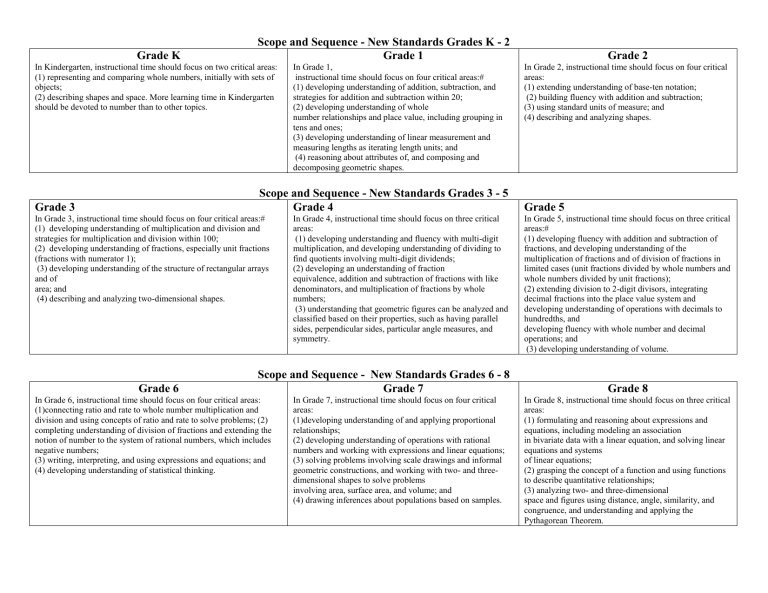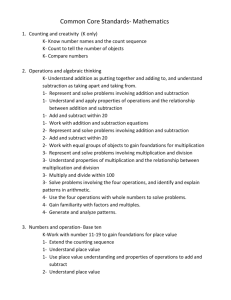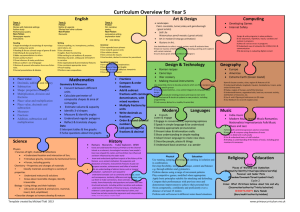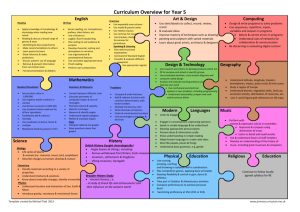Scope and Sequence K

In Kindergarten, instructional time should focus on two critical areas:
(1) representing and comparing whole numbers, initially with sets of objects;
(2) describing shapes and space. More learning time in Kindergarten should be devoted to number than to other topics.
Grade 3
Grade K
Scope and Sequence - New Standards Grades 3 - 5
In Grade 3, instructional time should focus on four critical areas:#
(1) developing understanding of multiplication and division and strategies for multiplication and division within 100;
(2) developing understanding of fractions, especially unit fractions
(fractions with numerator 1);
(3) developing understanding of the structure of rectangular arrays and of area; and
(4) describing and analyzing two-dimensional shapes.
Scope and Sequence - New Standards Grades K - 2
Grade 1
In Grade 1,
instructional time should focus on four critical areas:#
(1) developing understanding of addition, subtraction, and strategies for addition and subtraction within 20;
(2) developing understanding of whole number relationships and place value, including grouping in tens and ones;
(3) developing understanding of linear measurement and measuring lengths as iterating length units; and
(4) reasoning about attributes of, and composing and decomposing geometric shapes.
Grade 4
In Grade 4, instructional time should focus on three critical areas:
(1) developing understanding and fluency with multi-digit multiplication, and developing understanding of dividing to find quotients involving multi-digit dividends;
(2) developing an understanding of fraction equivalence, addition and subtraction of fractions with like denominators, and multiplication of fractions by whole numbers;
(3) understanding that geometric figures can be analyzed and classified based on their properties, such as having parallel sides, perpendicular sides, particular angle measures, and symmetry.
Grade 2
In Grade 2, instructional time should focus on four critical areas:
(1) extending understanding of base-ten notation;
(2) building fluency with addition and subtraction;
(3) using standard units of measure; and
(4) describing and analyzing shapes.
Grade 5
In Grade 5, instructional time should focus on three critical areas:#
(1) developing fluency with addition and subtraction of fractions, and developing understanding of the multiplication of fractions and of division of fractions in limited cases (unit fractions divided by whole numbers and whole numbers divided by unit fractions);
(2) extending division to 2-digit divisors, integrating decimal fractions into the place value system and developing understanding of operations with decimals to hundredths, and developing fluency with whole number and decimal operations; and
(3) developing understanding of volume.
Scope and Sequence - New Standards Grades 6 - 8
Grade 6
In Grade 6, instructional time should focus on four critical areas:
(1)connecting ratio and rate to whole number multiplication and division and using concepts of ratio and rate to solve problems; (2) completing understanding of division of fractions and extending the notion of number to the system of rational numbers, which includes negative numbers;
(3) writing, interpreting, and using expressions and equations; and
(4) developing understanding of statistical thinking.
Grade 7
In Grade 7, instructional time should focus on four critical areas:
(1)developing understanding of and applying proportional relationships;
(2) developing understanding of operations with rational numbers and working with expressions and linear equations;
(3) solving problems involving scale drawings and informal geometric constructions, and working with two- and threedimensional shapes to solve problems involving area, surface area, and volume; and
(4) drawing inferences about populations based on samples.
Grade 8
In Grade 8, instructional time should focus on three critical areas:
(1) formulating and reasoning about expressions and equations, including modeling an association in bivariate data with a linear equation, and solving linear equations and systems of linear equations;
(2) grasping the concept of a function and using functions to describe quantitative relationships;
(3) analyzing two- and three-dimensional space and figures using distance, angle, similarity, and congruence, and understanding and applying the
Pythagorean Theorem.






